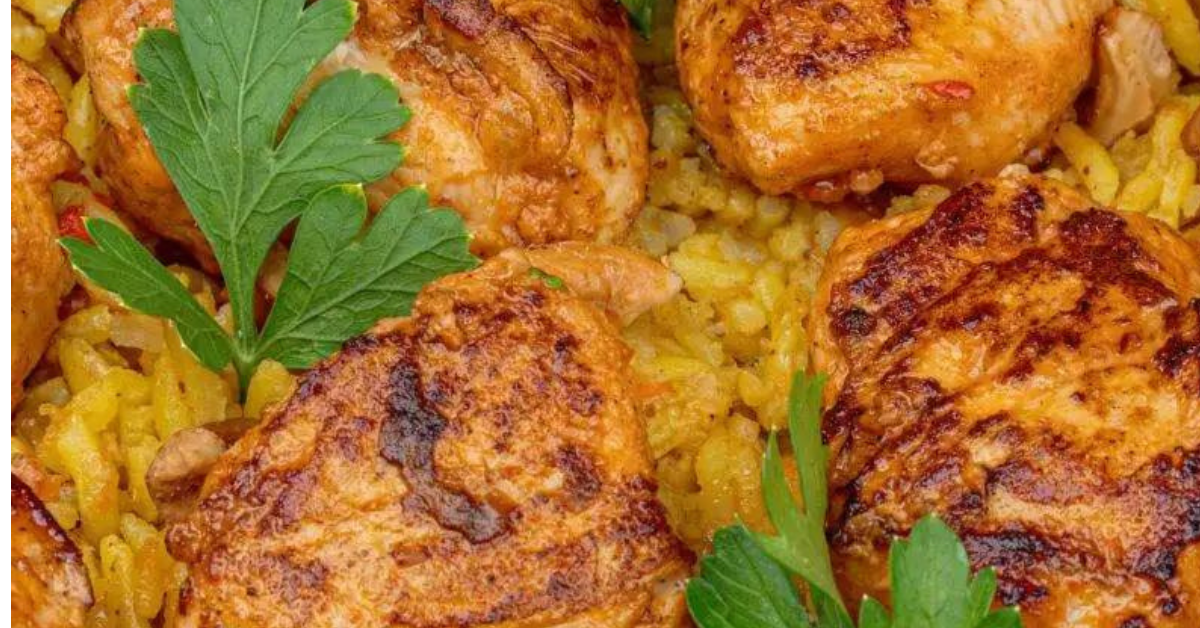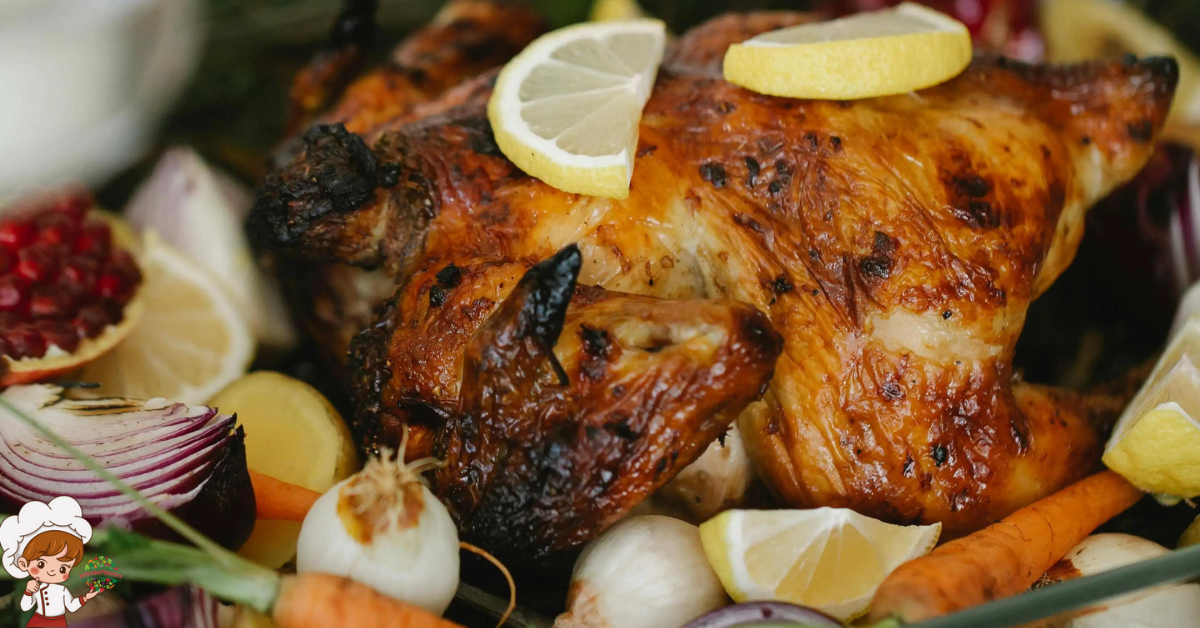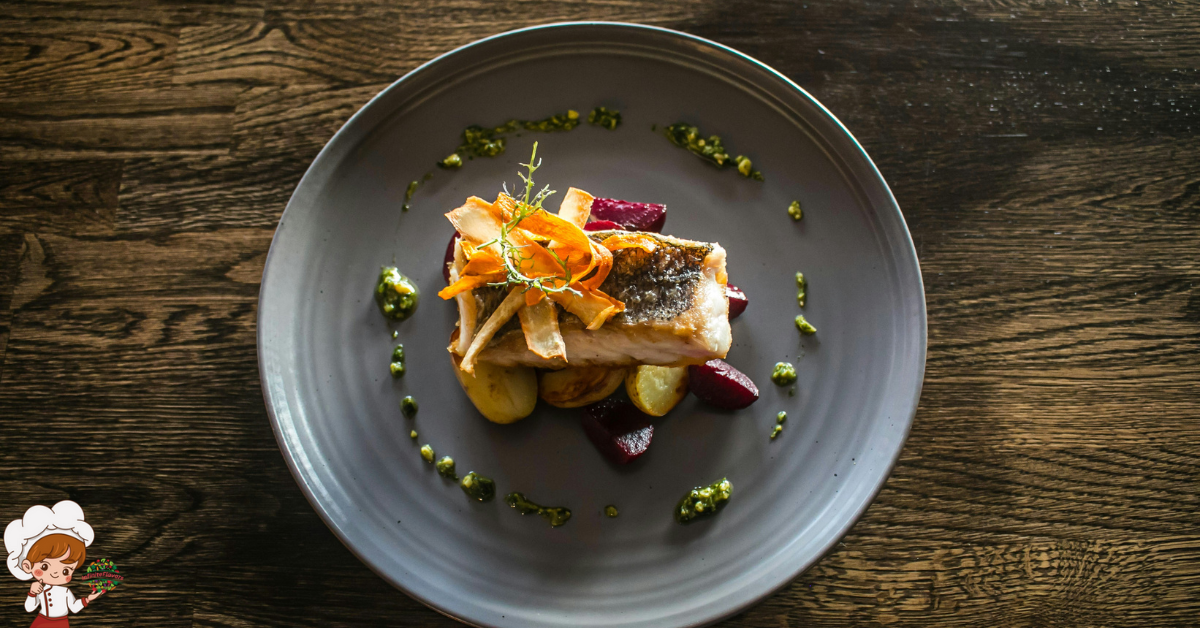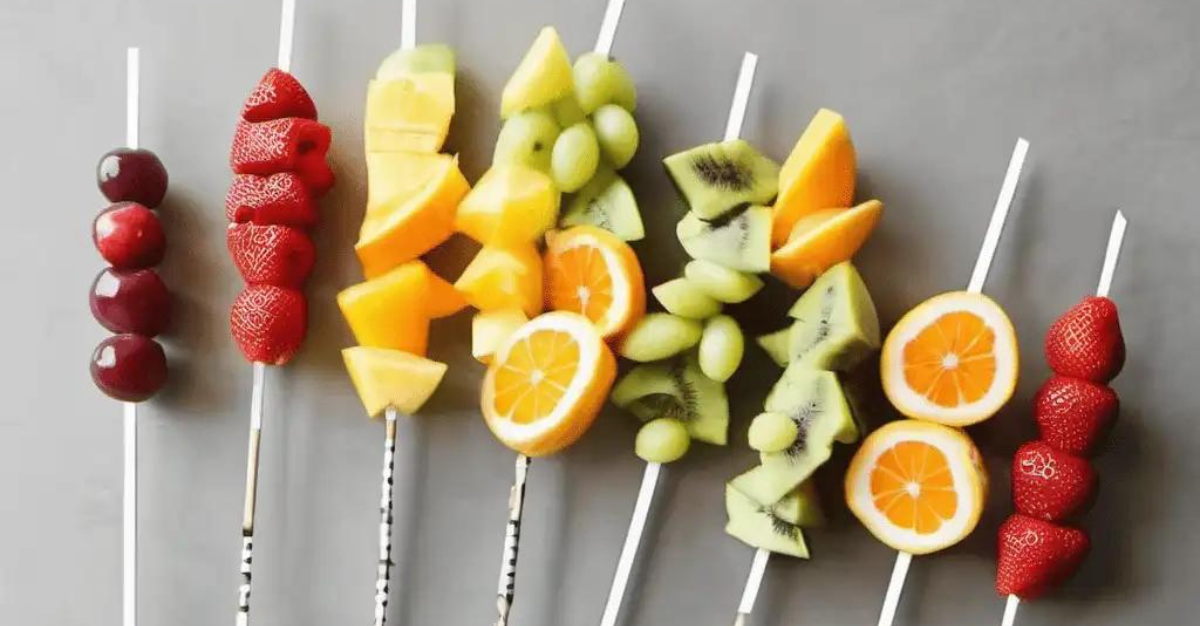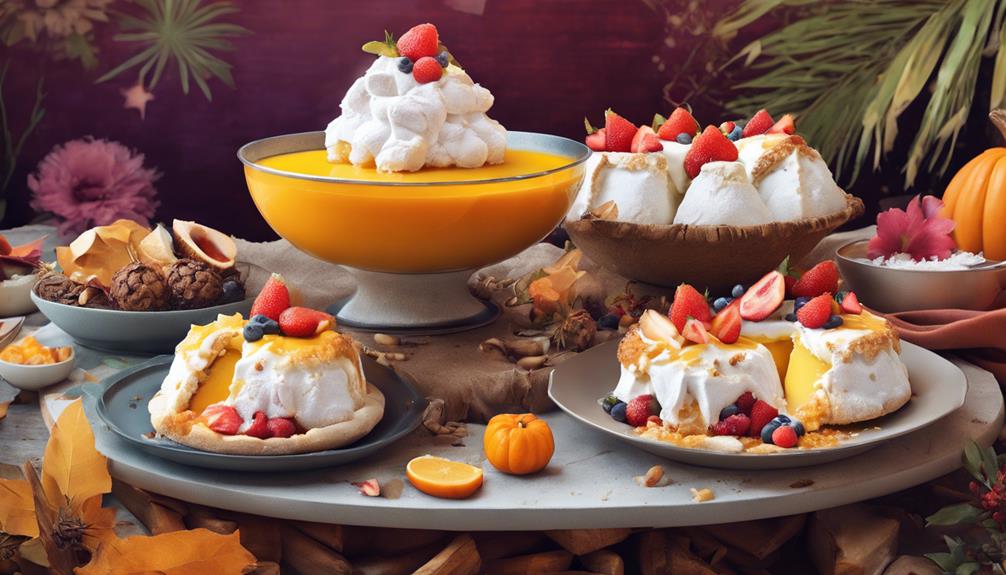Amazing Cajun-Creole Food And Its Native American Heritage
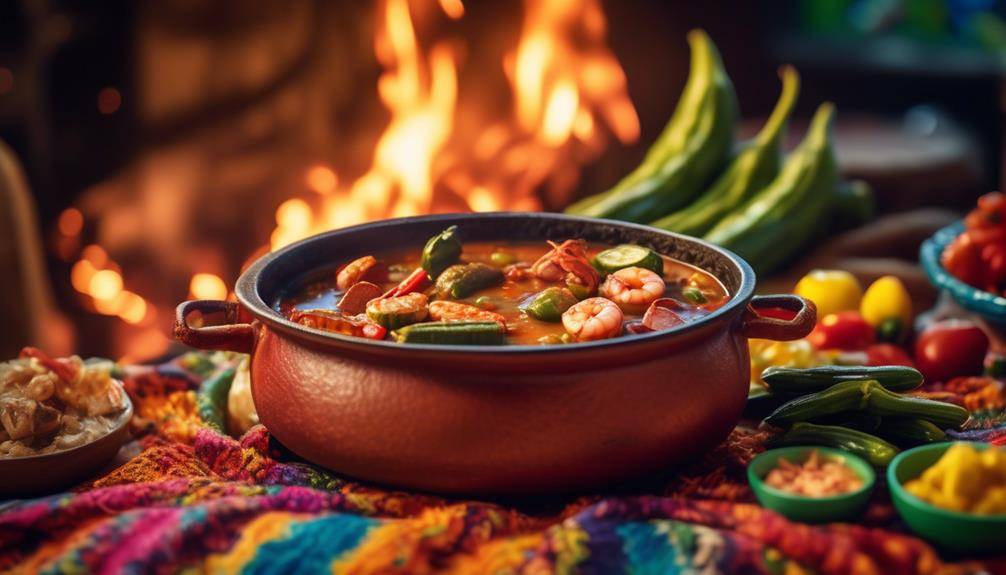
Cajun-Creole Food And Its Native American Heritage; Imagine yourself sitting down to a steaming bowl of gumbo, the rich aroma of spices wafting through the air. As you take your first bite, the flavors explode on your palate, a harmonious blend of smoky, spicy, and savory. But did you know that behind these tantalizing flavors lies a hidden story? Cajun/Creole cuisine, with its deep roots in Louisiana, not only reflects the influences of French, African, and Caribbean cultures, but also owes a significant debt to the Native American heritage of the region.
Native American tribes such as the Choctaw, Houma, and Chitimacha have contributed their culinary traditions to the rich tapestry of Cajun/Creole food, lending their unique flavors and techniques to beloved dishes. So, let’s journey into the fascinating world of Cajun/Creole food and discover the untold Native American heritage that lies within.
Origins of Cajun/Creole Cuisine
The origins of Cajun/Creole cuisine can be traced back to the merging of French, African, and Native American culinary traditions in the vibrant cultural melting pot of Louisiana. Native American farming techniques played a significant role in shaping the early food culture of this region, as they introduced the concept of cultivating crops such as corn, beans, and squash. These crops provided a foundation for many of the dishes that are now synonymous with Cajun/Creole cuisine.
Cultural exchange in Cajun/Creole cuisine can be seen through the use of ingredients and cooking techniques. Native Americans introduced the French settlers to ingredients like corn, which became a staple in dishes like cornbread and grits. They also taught them how to use the “three sisters” crops, a combination of corn, beans, and squash, which are still commonly used in dishes such as gumbo.
The fusion of French and Native American culinary techniques resulted in the development of dishes like jambalaya, which combines rice and spices with ingredients like sausage, chicken, and seafood. The influence of African culinary traditions can also be seen in dishes like étouffée, a rich and flavorful stew that incorporates a roux, a technique brought over by African slaves.
The cultural exchange in Cajun/Creole cuisine goes beyond just ingredients and techniques. It is also reflected in the flavors and spices used. Native American cuisine often incorporated herbs and spices like chili peppers, while French cuisine introduced the use of wine and garlic. This blending of flavors created a unique and vibrant palette that is characteristic of Cajun/Creole cuisine.
Native American Influence in Cajun/Creole Food
Influenced by Native American culinary traditions, Cajun/Creole food showcases a rich tapestry of flavors and techniques that have shaped the vibrant cuisine of Louisiana. Native American farming techniques played a crucial role in the development of Cajun/Creole cuisine. Native American tribes such as the Choctaw, Houma, and Chitimacha cultivated crops like corn, beans, and squash, which are now staple ingredients in Louisiana cooking. These tribes also introduced the concept of using ground cornmeal to make dishes like cornbread and grits, which have become iconic elements of Cajun/Creole cuisine.
The cultural exchange between Native Americans and the French, Spanish, and African settlers further enriched the culinary landscape of Louisiana. Native American ingredients like sassafras leaves, used to make filé powder, were incorporated into dishes like gumbo, a signature Cajun/Creole dish. Native American cooking techniques, such as smoking and drying meats, were adopted by the Cajuns and Creoles, resulting in dishes like smoked sausages and boudin.
Additionally, Native American tribes shared their knowledge of herbs and spices with the settlers, contributing to the distinct flavor profiles found in Cajun/Creole cuisine. For example, the use of herbs like bay leaves, thyme, and parsley in dishes like étouffée and jambalaya can be traced back to Native American influences.
The Native American influence in Cajun/Creole cuisine is a testament to the cultural diversity and exchange that has shaped the culinary traditions of Louisiana. By embracing and incorporating Native American farming techniques, ingredients, and cooking techniques, Cajun/Creole food has evolved into a unique and vibrant cuisine that continues to captivate food enthusiasts around the world.
Traditional Native American Ingredients in Cajun/Creole Dishes
Traditional Native American ingredients play a pivotal role in the complex flavor profiles and culinary heritage of Cajun/Creole dishes. The fusion of Native American and European cuisines resulted in a unique blend of flavors and ingredients that are still prevalent in modern Cajun/Creole cooking. Native American farming techniques, such as the Three Sisters planting method, have influenced the use of indigenous ingredients in these dishes.
The Three Sisters planting method, consisting of corn, beans, and squash, was widely practiced by Native American tribes in the region. Corn provides a sturdy base for many Cajun/Creole dishes, including the famous cornbread and grits. Beans add a rich and creamy texture to soups, stews, and even jambalaya. Squash, with its vibrant colors and earthy taste, is often utilized in side dishes or as a stuffing for meats.
Another key ingredient in Cajun/Creole cuisine is the use of peppers, particularly chili peppers. Native Americans introduced Europeans to a variety of peppers, including the fiery cayenne pepper. Today, Cajun/Creole dishes are renowned for their bold and spicy flavors, thanks in part to the influence of these indigenous peppers.
Additionally, Native American tribes introduced various herbs and spices to Cajun/Creole cuisine. The use of sassafras leaves in filé powder, a crucial ingredient in gumbo, is a prime example. This aromatic herb adds a distinct flavor and thickens the stew, giving it a unique taste and texture.
Cooking Techniques Derived From Native American Culture
Native American cooking techniques have greatly influenced the culinary practices of Cajun/Creole cuisine, contributing to the unique flavors and textures found in these dishes. The cultural adaptation of these techniques has resulted in a rich and diverse culinary tradition that continues to thrive today.
One of the key cooking techniques derived from Native American culture is the use of open-fire cooking. Native Americans traditionally cooked their meals over open fires, using methods such as roasting, grilling, and smoking. This technique not only imparts a distinct smoky flavor to the food but also allows for even heat distribution, resulting in perfectly cooked dishes.
Another important technique is the use of corn as a staple ingredient. Native Americans were known for cultivating and using corn in various forms, such as grinding it into flour or making it into hominy. This corn-based cooking technique is still evident in Cajun/Creole cuisine, where cornmeal is used to make dishes like cornbread and hushpuppies.
Additionally, Native American cooking techniques involved the use of natural ingredients and herbs for flavoring. Cajun/Creole cuisine has adopted this practice by incorporating a wide range of herbs and spices, such as bay leaves, thyme, and filé powder, which is made from ground sassafras leaves. These ingredients not only enhance the flavor of the dishes but also contribute to their distinct aroma.
Indigenous Spices and Flavors in Cajun/Creole Cuisine
When it comes to the indigenous spices and flavors in Cajun/Creole cuisine, the Native American influence is undeniable. Native Americans introduced traditional spice blends that continue to be used in these cuisines today. These spice blends often include ingredients like cayenne pepper, paprika, garlic, onion, and various herbs, which add depth and complexity to dishes. Comparatively, these indigenous flavors contribute to the unique and rich culinary heritage of Cajun/Creole food.
Native American Influence
Indigenous spices and flavors play a significant role in shaping the distinctive taste of Cajun/Creole cuisine, offering a rich tapestry of flavors that intertwine with the region’s vibrant culinary heritage. Native American culinary traditions have greatly influenced the development of this unique cuisine, resulting in a fascinating cultural exchange in food. Native American tribes, such as the Choctaw, Houma, and Chitimacha, have contributed their knowledge of indigenous ingredients and cooking techniques to the Cajun/Creole cuisine.
For example, the use of corn, beans, and squash, known as the “Three Sisters,” is a staple in Native American cuisine and has found its way into dishes like gumbo and jambalaya. Additionally, the introduction of wild game, such as alligator and turtle, adds a distinctive flavor to Cajun/Creole dishes. The fusion of Native American and European culinary traditions has created a truly unique and flavorful cuisine that continues to delight food lovers around the world.
Traditional Spice Blends
Incorporating a medley of aromatic herbs and spices, Cajun/Creole cuisine showcases an array of traditional spice blends that infuse the dishes with a captivating depth of flavor. These traditional spice blends are a testament to the rich indigenous spice varieties utilized in Cajun/Creole cooking. Here are four notable traditional spice blends that add a unique twist to these beloved cuisines:
- Cajun Seasoning: A blend of paprika, cayenne pepper, garlic powder, onion powder, and other spices, Cajun seasoning brings a fiery kick to dishes like gumbo and jambalaya.
- Creole Seasoning: With a milder and more complex flavor profile, Creole seasoning combines paprika, oregano, thyme, and other herbs and spices. It is commonly used in dishes like étouffée and red beans and rice.
- Blackening Spice: A bold and smoky blend of spices like paprika, cayenne pepper, and black pepper, blackening spice is used to coat fish, chicken, or steak before searing them in a hot skillet.
- File Powder: Made from dried sassafras leaves, file powder is a key ingredient in gumbo. It adds a subtle earthiness and thickens the dish, giving it a unique texture.
These traditional spice blends not only enhance the taste of Cajun/Creole cuisine but also serve as a reminder of the indigenous roots and diverse cultural influences that have shaped these vibrant flavors.
Native American Contribution to Seafood in Cajun/Creole Cooking
Native American influence on Cajun/Creole seafood cuisine is evident through the incorporation of traditional Native American ingredients and cooking techniques. Native American tribes living along the Gulf Coast were skilled in harvesting and preparing seafood, which greatly influenced the development of Cajun/Creole seafood dishes.
One significant Native American seafood technique that has been adopted in Cajun/Creole cooking is the use of smoking. Native Americans would smoke their catch to preserve it for future use. This technique not only extended the shelf life of the seafood but also added a unique smoky flavor to the dishes. The practice of smoking seafood, such as fish and oysters, is still prevalent in Cajun/Creole cuisine today.
Indigenous flavors also play a vital role in Cajun/Creole seafood dishes. Native Americans used ingredients like corn, beans, and squash in their cooking, which were later incorporated into Cajun/Creole seafood dishes. For example, cornmeal is commonly used as a coating for fried seafood, giving it a crunchy texture and a hint of sweetness. The use of beans and squash in seafood stews and gumbos adds depth and earthiness to the dishes.
Furthermore, Native Americans introduced the concept of using local, seasonal ingredients in Cajun/Creole seafood cuisine. They were skilled at foraging for wild edibles, such as herbs, berries, and mushrooms, to enhance the flavors of their dishes. This approach to cooking is still evident in Cajun/Creole cuisine, where chefs emphasize the use of fresh, locally sourced ingredients to create vibrant and flavorful seafood dishes.
Corn, Squash, and Beans: The Three Sisters in Cajun/Creole Food
The incorporation of corn, squash, and beans, known as the Three Sisters, is a defining characteristic of Cajun/Creole cuisine and contributes to the rich and diverse flavors of the region’s food. Native American farming techniques heavily influenced the agricultural practices of the Cajun and Creole communities, and the Three Sisters are a prime example of this. Here’s why they play such an important role in Cajun/Creole food:
- Complementary Growth: The Three Sisters are traditionally grown together in the same plot of land. Corn serves as a trellis for the climbing beans, while the squash spreads out on the ground, acting as a natural weed deterrent. This mutually beneficial relationship maximizes the use of space and resources, making it an efficient farming technique.
- Nutritional Value: Each of the Three Sisters brings unique nutritional benefits to the table. Corn provides carbohydrates and essential vitamins, beans are rich in protein, and squash offers vitamins and minerals. Together, they form a well-rounded and nutritious combination that has sustained generations of people in the region.
- Flavor and Texture: The Three Sisters add depth and complexity to Cajun/Creole dishes. The sweet and earthy flavor of corn complements the creamy texture of beans, while the mild and slightly sweet taste of squash adds a refreshing contrast. This combination creates a harmonious blend of flavors that is characteristic of Cajun/Creole cuisine.
- Cultural Significance: The Three Sisters hold cultural significance for both Native American and Cajun/Creole communities. It represents a connection to the land, sustainable farming practices, and the shared history between these two cultures. By incorporating the Three Sisters into their cuisine, Cajun and Creole chefs pay tribute to their ancestors and preserve their culinary heritage.
The incorporation of the Three Sisters in Cajun/Creole food showcases the influence of Native American farming techniques on the region’s culinary practices. It not only contributes to the diverse flavors of the cuisine but also serves as a reminder of the deep-rooted cultural history that continues to shape Cajun and Creole food today.
Native American Staple Foods Adapted in Cajun/Creole Cuisine
One can observe the adaptation of Native American staple foods into Cajun/Creole cuisine as a testament to the culinary ingenuity and cultural exchange that has shaped the region’s gastronomy. Native American culinary techniques and ingredients were incorporated and fused with the flavors and cooking methods of the French, Spanish, and African populations that settled in Louisiana. This cultural fusion in Cajun/Creole cuisine created a unique and vibrant culinary tradition.
One prominent example of Native American staple foods adapted in Cajun/Creole cuisine is the use of corn. Native Americans cultivated and consumed corn as a staple crop long before the arrival of European settlers. In Cajun/Creole cuisine, corn is used in various forms such as cornmeal, corn flour, and fresh or canned corn. It is a key ingredient in dishes like cornbread, hush puppies, and maque choux, a traditional corn and vegetable stew.
Another staple food adapted from Native American cuisine is beans. Native Americans cultivated and cooked beans for centuries, and this tradition was passed down to Cajun/Creole cuisine. Red beans and rice is a classic Cajun/Creole dish that features kidney beans, traditionally served on Mondays. This dish has its roots in the Native American tradition of utilizing beans as a source of protein and sustenance.
Squash is yet another Native American staple food that has found its way into Cajun/Creole cuisine. Native Americans grew and consumed various types of squash, including winter squash like pumpkin and butternut squash. In Cajun/Creole cuisine, squash is used in dishes like gumbo and jambalaya, adding a rich and earthy flavor to these iconic dishes.
The adaptation of Native American staple foods in Cajun/Creole cuisine showcases the interconnectedness of different cultures and the evolution of culinary traditions. It is a testament to the resilience and creativity of the people who settled in Louisiana, as they embraced and incorporated the ingredients and techniques of the Native Americans to create a truly unique and delicious cuisine.
Native American Influence on Gumbo and Jambalaya
As we continue exploring the influence of Native American cuisine on Cajun/Creole food, it is fascinating to delve into the unique ways in which Native American culinary traditions have shaped the iconic dishes of gumbo and jambalaya. The Native American influence on these dishes can be seen in the preparation techniques, ingredients, and flavors that are characteristic of both gumbo and jambalaya. Here are four key ways in which Native American cuisine has influenced these beloved Cajun/Creole dishes:
- Native American Influence on Roux: The Native Americans introduced the concept of using ground nuts, such as pecans and acorns, to thicken stews and soups. This technique was adopted by Cajun/Creole cooks who began using roux, a mixture of fat and flour, to achieve a similar thickening effect in gumbo and jambalaya.
- Native American Influence on Seafood Spices: Native American tribes in Louisiana were known for their use of aromatic herbs and spices, such as sassafras, bay leaves, and chili peppers. These flavors were incorporated into Cajun/Creole cooking, adding depth and complexity to the seafood-based dishes like gumbo and jambalaya.
- Use of Indigenous Ingredients: Native American tribes in Louisiana cultivated and harvested a variety of ingredients that are now synonymous with Cajun/Creole cuisine. For example, corn, beans, squash, and wild game were commonly used in Native American cooking and have since become staples in gumbo and jambalaya.
- Cooking Techniques: Native Americans traditionally cooked their meals in large communal pots over open fires. This communal cooking style was adopted by Cajun/Creole cooks, who continue to use large pots and slow cooking methods to prepare gumbo and jambalaya, allowing the flavors to meld together and create a rich and hearty dish.
The Native American influence on gumbo and jambalaya is undeniable. These dishes not only showcase the diverse culinary heritage of Louisiana but also highlight the important contributions that Native American tribes have made to the development of Cajun/Creole cuisine.
Boudin and Native American Sausage Traditions
When it comes to boudin and Native American sausage traditions, the culinary cross-cultural influences are notable. Both the Cajun/Creole and Native American communities have their own unique sausage-making techniques, but there are also similarities in the ingredients and flavors used. Boudin, a popular sausage in Cajun cuisine, has been influenced by Native American traditions, resulting in a delicious blend of cultures and flavors.
Culinary Cross-Cultural Influences
The culinary landscape of Cajun/Creole food is marked by its rich history of cross-cultural influences, with one notable example being the incorporation of Native American sausage traditions into the beloved dish of Boudin. This culinary fusion showcases the cultural exchange that has shaped Cajun/Creole cuisine over the centuries. Here are four key aspects of this cross-cultural influence:
- Native American Techniques: Native Americans used various methods to preserve meat, including drying, smoking, and grinding. These techniques were adopted by Cajun/Creole cooks, who incorporated them into the preparation of Boudin.
- Indigenous Ingredients: Native American cuisine relied heavily on ingredients like corn, beans, and squash. These ingredients found their way into the Boudin recipe, adding depth and flavor to the dish.
- Flavor Profiles: Native American seasonings, such as sassafras, sarsaparilla, and wild onions, were incorporated into Boudin, creating a unique and distinctive flavor profile.
- Sausage-Making Techniques: Native American tribes had their own methods of making sausages, which involved grinding meat and mixing it with various seasonings. These techniques influenced the way Boudin was made, resulting in a sausage that is still enjoyed today.
The incorporation of Native American sausage traditions into Boudin exemplifies the culinary cross-cultural influences that have shaped Cajun/Creole cuisine, adding depth, flavor, and historical significance to this beloved dish.
Sausage-Making Techniques
Sausage-making techniques play a significant role in both Boudin and Native American sausage traditions, contributing to the distinct flavors and textures of these beloved culinary creations. The indigenous sausage recipes of Native Americans were often made by grinding meat, such as buffalo, deer, or turkey, and mixing it with various herbs, spices, and grains.
The mixture was then stuffed into animal casings, typically made from intestines, and smoked or cooked over an open fire. Similarly, Boudin, a traditional Cajun sausage, utilizes a combination of pork meat, rice, onions, and spices, which are stuffed into casings and then boiled or grilled. The techniques of grinding, mixing, stuffing, and cooking are shared between the two traditions, resulting in sausages that are rich in flavor and have a satisfying texture.
Native American Influence on Cajun/Creole Desserts
Influenced by Native American culinary traditions, Cajun/Creole desserts exhibit a unique blend of flavors and techniques that set them apart from other regional cuisines. The Native American influence on Cajun/Creole desserts can be seen in the use of native ingredients, traditional preparation methods, and the incorporation of Indigenous flavors. Here are four key ways in which Native American culinary traditions have shaped Cajun/Creole desserts:
- Use of Native Ingredients: Cajun/Creole desserts often feature ingredients that were commonly used by Native American tribes, such as cornmeal, sweet potatoes, and pecans. These ingredients add a distinct flavor and texture to the desserts, creating a delicious and unique experience.
- Traditional Preparation Methods: Native American desserts were often made using simple techniques such as boiling, steaming, or baking. These traditional methods have been adopted by Cajun/Creole chefs, resulting in desserts that are simple yet incredibly flavorful.
- Incorporation of Indigenous Flavors: Native American tribes had a deep understanding of the local flora and fauna, and this knowledge is reflected in the flavors they used in their desserts. Cajun/Creole desserts often incorporate ingredients like honey, berries, and wild herbs, which add a natural sweetness and complexity to the dishes.
- Preservation of Native American Dessert Traditions: Cajun/Creole cuisine has played an important role in preserving Native American dessert traditions. By incorporating these traditional sweets into their menus, Cajun/Creole chefs have helped keep these recipes alive and passed them down through generations.
Preserving Native American Heritage in Cajun/Creole Food
Preserving the rich Native American heritage in Cajun/Creole food is an essential aspect of honoring and celebrating the cultural legacy that has shaped these unique culinary traditions. It is crucial to recognize the contributions of Native American tribes to the development of Cajun/Creole cuisine and to ensure that their culinary heritage is preserved and respected.
Cajun/Creole food is known for its diverse flavors and ingredients, many of which can be traced back to Native American traditions. From the use of corn, beans, and squash in dishes like maque choux to the incorporation of wild game and seafood, Native American influences are deeply ingrained in the fabric of Cajun/Creole cuisine.
Preserving this culinary heritage involves more than just acknowledging its origins. It requires a conscious effort to learn about and understand the traditional cooking techniques and ingredients used by Native American tribes. By studying their methods, we can gain a deeper appreciation for the flavors and techniques that have been passed down through generations.
Furthermore, preserving Native American heritage in Cajun/Creole food also means being mindful of cultural appropriation. It is important to respect the traditions and customs of Native American tribes and to avoid appropriating their cuisine without proper understanding and acknowledgment. This entails giving credit where credit is due and engaging in responsible culinary practices.
Cajun-Creole Food And Its Native American Heritage; Frequently Asked Questions
How Did Native American Cuisine Influence the Flavors and Spices in Cajun/Creole Dishes?
Native American cuisine heavily influenced the flavors and spices in Cajun/Creole dishes. The use of ingredients like corn, beans, and squash, as well as various herbs and spices, added depth and complexity to the dishes.
What Are Some Traditional Native American Ingredients That Are Commonly Used in Cajun/Creole Cuisine?
In Cajun/Creole cuisine, traditional Native American ingredients like corn, beans, and squash are commonly used. The Native American influence on flavors and spices in these dishes adds depth and richness to the culinary experience.
How Did Native American Cooking Techniques Contribute to the Development of Cajun/Creole Cooking?
Native American cooking techniques heavily influenced Cajun/Creole cuisine, contributing to its unique flavors and spices. Using smoking, drying, and grinding methods, Native Americans preserved and enhanced ingredients, shaping the development of this rich and vibrant culinary tradition.
In What Ways Did Native Americans Contribute to the Seafood Dishes in Cajun/Creole Cuisine?
Native Americans significantly influenced the seafood dishes in Cajun/Creole cuisine. Their seafood contributions, such as techniques like smoking and drying fish, added depth and flavor to the dishes, making them unique and delicious.
How Have Cajun/Creole Chefs Adapted Native American Staple Foods in Their Dishes?
Cajun/Creole chefs have adapted Native American staple foods in their dishes by incorporating ingredients like corn, beans, and squash. These additions enhance the flavors and textures of Cajun/Creole food, creating a unique fusion of Indigenous influence and traditional cuisine.
Conclusion
In conclusion, the rich and flavorful Cajun/Creole cuisine owes a great deal to its Native American heritage. From the use of traditional ingredients and cooking techniques to the incorporation of indigenous spices and flavors, Native American influence can be seen in every aspect of these beloved dishes. Whether it’s the hearty gumbo and jambalaya or the delicious boudin and desserts, the preservation of Native American heritage in Cajun/Creole food is a testament to the cultural fusion that makes this cuisine so unique and delicious.



